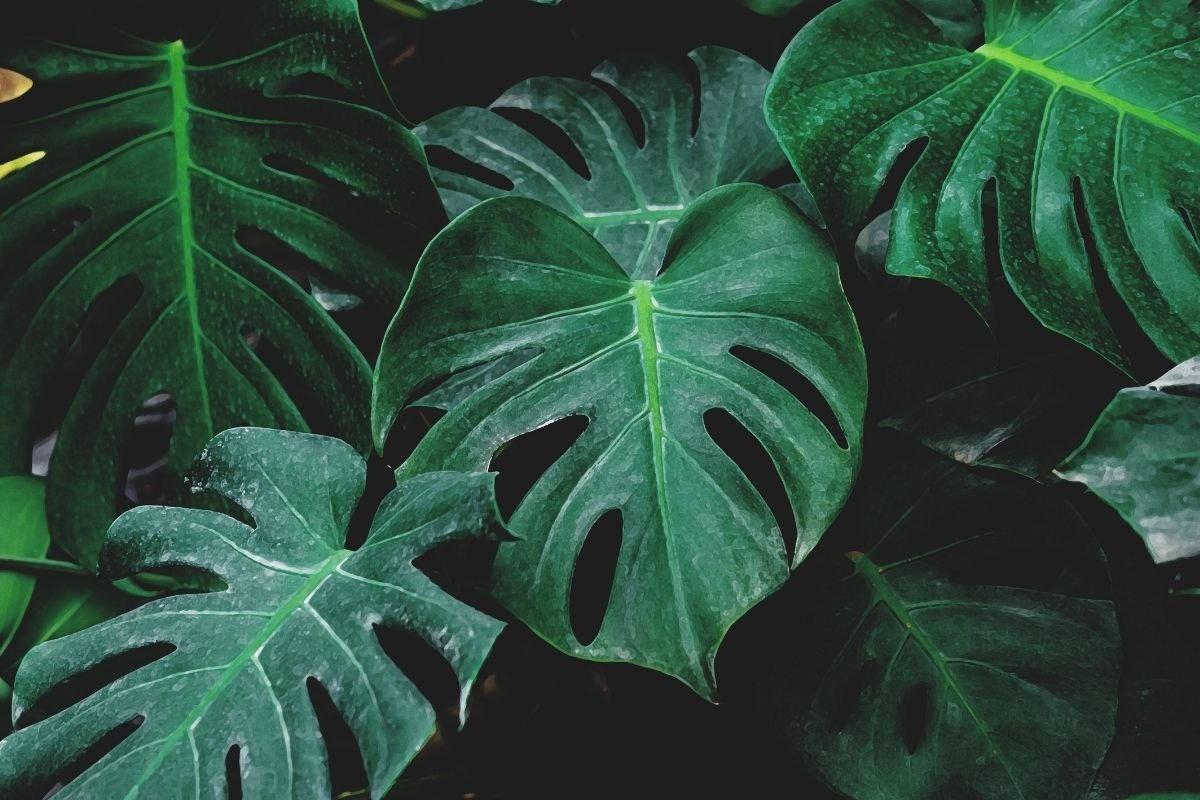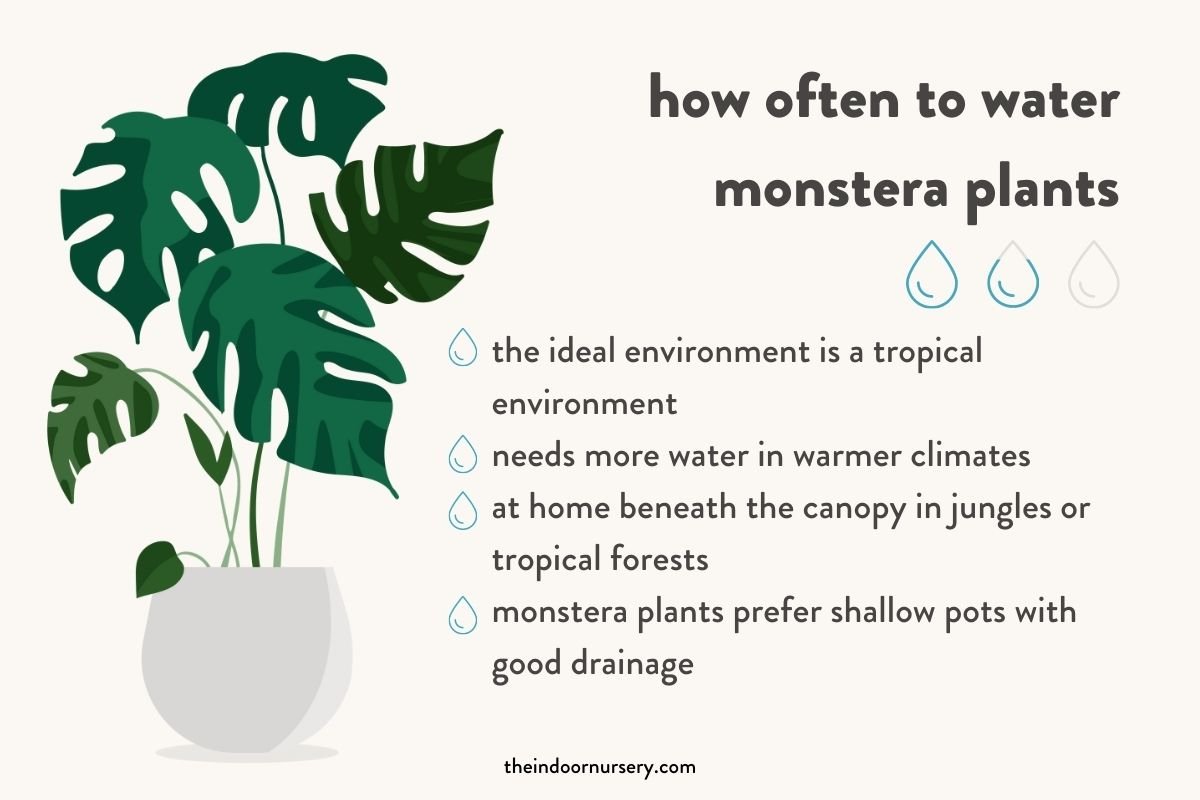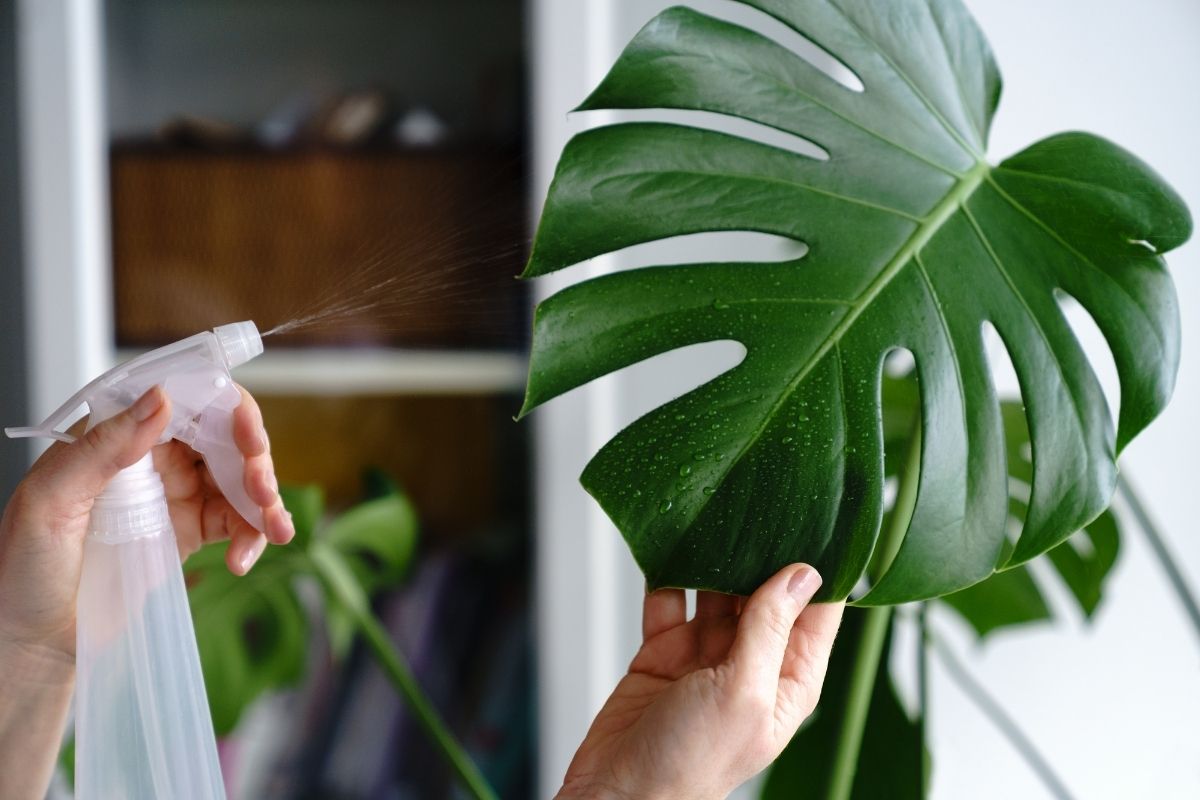Monstera is one of the most sought after tropical plants available on the market. They grow gorgeous leaves, and don’t require a lot of space, making them an ideal houseplant.
However, because they’re tropical and not all of us live in lush jungles like I do, knowing how to water a monstera can be a bit of a challenge.
If you need to learn how to water your monstera plant, then keep reading. We’ve got everything you need to know.
How often to water monstera plants
Monstera deliciosa is perhaps the most common monstera you’ll find being sold. It’s commonly referred to as the swiss cheese plant, thanks to the way that its leaves develop. These plants are beautiful, but watering them can present a challenge.
When you water monstera plants, you have to take into account the season. When you water monstera deliciosa, you’ll find that seasonality makes a huge difference in watering frequency.
When to water monstera plants in winter
In winter, monstera plants are one of the many tropical house plants available that enters a state of dormancy. The causes behind this dormancy are largely due to the monstera being a tropical plant. These plants thrive in a tropical environment, and when temperatures and humidity change, the plants go to their dormant state to conserve energy.
When watering your monstera during the winter, it’s important to avoid over watering. The plant is not going to absorb as much water, meaning that potting soil may become too wet. Prolonged soil moisture can lead to root rot, which will end up killing your monstera. Only water your monstera once every two to three weeks, or when the plant has dry soil.
When to water monstera plants in summer
For the most part, monstera plants will be active during the summer. This is because temperatures are higher, and so is humidity, making the plant feel like it’s in a more tropical setting. In the summer, you’ll find that your monstera will need more water than in the winter.
Monstera plants should be given distilled water once a week, or when the top 2 inches of the plant’s soil are dry. However, you’ll find some different factors that may change this metric below.

Things that impact your monstera watering schedule
The ideal environment for the monstera plant is a tropical environment. These plants are normally found beneath the canopy in jungles or tropical forests. As such, they have a few specific needs to keep them healthy.
Temperature and humidity
Temperature and humidity are large factors when it comes to watering a monstera. Typically, monstera plants respond well to warmer temperatures and higher humidity. When these values are both increased, a monstera transpires more, meaning that it needs more water than in other scenarios. A small plant humidifier can do absolute wonders for any monstera plant.
Type of soil
Monstera plants need a soil mix that replicates that of their typical environment. This means that soil cannot be compacted whatsoever. Often, fresh soil should be mixed with things like perlite and orchid bark, letting excess water drain. Soil mix is a huge part of the monstera life cycle and watering needs. Learn more: the best soil for monstera plants
Pot type
Even though monstera plants grow large leaves, they do not respond well to being in large pots. In fact, these plants do well in smaller pots with adequate drainage holes. Monstera roots are shallow, and in a large volume of soil, they lack the ability to reach the water in all areas of the potting medium. This results in soggy soil at the best or wet soil at the worst. Both are a contributing factor to monstera root rot.
Many monstera owners find success with their plants when they use a terracotta pot and have good watering habits. Even though a terracotta pot only has a single drainage hole, the pot itself prevents water from building up, keeping the soil moist but not waterlogged.
Plant growth period
Monsteras experience the most growth during the spring, summer, and fall months. Again, this relates to seasonality. These are the months when you may have issues with underwatering rather than overwatering. To facilitate growth, watering needs to be regulated, and bright, indirect light needs to be properly provided.

How much water do monstera plants need?
The amount of water your monstera plants need depends largely upon all of the factors listed above. Monstera plants are highly reactive to their environments and growing conditions. If your plant is warmer, and given optimal growing conditions, it will need more water than a plant in a colder environment.
The most important thing you can do is pay attention to your plant and look for the classic signs of over and under watering.
Signs of an over watered monstera
- Yellowing leaves, indicating that roots are drowning
- Dark brown spots on leaves, a sign of root rot
- If soil remains soggy after an extended period of time
- Soil smells bad, indicating bacterial or fungal growth
Signs of an under watered monstera
- Drooping leaves, indicating a lack of pressure
- Curling leaves, showing that the plant is attempting to stop transpiration
- Yellowing leaves, exhibiting stress
- Crispy leaves with brown edges
- Growth slows below an average rate
How to know when your monstera plant needs water
Sometimes you can catch watering issues before they happen by paying attention to the signs your plant provides. All of the symptoms listed above start to show slowly, and can be recognized before any major damage is done.
Additionally, you can use different tools to keep track of your monstera’s watering needs, like a moisture meter. A moisture meter helps you monitor the soil moisture of your monstera plant. By using this tool as well as your observational skills, you can keep your monstera’s watering schedule tight to promote healthy growth.
When your monstera needs more water
- Summer months require more watering due to increased transpiration and plant growth. Summer is the optimal time to help your monstera grow beautifully.
- After repotting, your montera is going to try to establish new, healthy roots in the fresh soil. More water will be required when your plant is repotted.
When your monstera needs less water
- Monsteras enter a state of dormancy during winter, meaning that they’ll need less water than some other indoor plants. Maintaining a summer watering schedule during the winter will lead to waterlogged soil for extended periods, and possibly root rot.
- Watering your monstera should happen less frequently when the potting mix is retaining moisture for too long. This is something that may occur year round. If the first few inches of soil remain moist for days at a time, you may be over watering, leading to fungal infections and root rot. Always check the soil before watering again.
More About Monsteras
- How Often To Water Monstera Plants
- Monstera Adansonii Care Guide
- Monstera Deliciosa Care: How To Care Of Monstera Plants
- Save Your Overwatered Monstera In 4 Steps (And How Not To Do It Again)
- Scale On Monstera: What To Do And How To Save It
- Best Soil For Monstera Plants (DIY Recipe + Store-Bought Options)
- Best fertilizer for Monstera plants for gorgeous leaves





